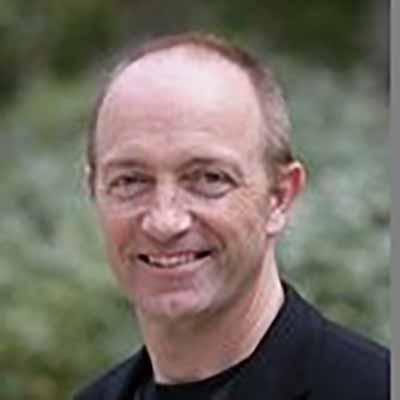 Presented by Paul Campbell,
Presented by Paul Campbell,
Former Chief Innovation Officer,
W. L. Gore & Associates
One key tension innovation leader’s face is balancing broad innovation initiatives with operational improvements. The former serves the need of the company to pursue growth opportunities while the latter delivers critical improvements to margins, efficiency and speed/agility in the core businesses which will generate a bulk of the revenue and profit for the near term. In this session, we explore how innovation teams can apply their talented resources and processes to increase the operational efficiency of core businesses.
Paul Campbell led a best practices discussion around tapping into existing and new ecosystems of partners and service providers to amplify scarce internal resources, for the purpose of doing more with less.
Key take-aways:
- Best practices for introducing innovation programs into core businesses
- Fresh perspective on how to tap into a larger ecosystem of vendors, partners and service providers
- Blueprint to explore processes to balance generative and iterative programs
- Examples of ‘metrics that matter’ for optimal operational efficiency improvements
A diverse group of Growth Innovation Leadership Council members including marketers, business development directors and innovation professionals, participated in this members-only Virtual Event.
Presenter and innovation leader Paul Campbell began by asking, “What one thing would you change to make your company more efficient and effective?” Member replies included: fewer internal processes so teams could be more agile; breaking down organizational siloes; (mentioned several times) more knowledge and application of best practices (also mentioned several times) and improved decision making based on artificial intelligence (AI) and machine learning (ML) implementation. Paul stated that efficiency and effectiveness are critical to the innovation function, especially in large companies. Yet, as he shared, even with his extensive experience he still finds it difficult to fully assess or measure these qualities; perhaps a common innovation challenge.
Paul polled the members for their definitions of efficiency and effectiveness with the results below (largest size equals frequency of replies):

A few other quick member polls were conducted. When asked, “Which functions create obstacles or innovation efficiencies?” popular replies included the C-Suite (20%) and legal (13%) and R&D (13%). Members were also asked, “Which functions have you successfully collaborated with to improve efficiency and effectiveness?” Marketing, R&D and strategy were the most popular replies (17% each).
Paul also discussed the perils of the start-up J-Curve, defined by author Howard Love in his book as the period between start-up and sustainable success. This is where most companies dip after the initial start-up planning and design momentum. According to Love, this can occur for several reasons including: product takes longer to refine and develop than planned, customers don’t embrace the initial product or the business model doesn’t quite work. 1 To be prepared for J-Curve setbacks, Paul encouraged the innovators in the (virtual) room to be sure they had the organizational latitude to tweak and refine business models outside of core business unit oversight and to recruit dedicated, well-compensated team members especially during this critical period.
As noted, most innovation efforts fall into the core innovation category, i.e. incremental changes to existing products or services. Sometimes companies engage in adjacent innovation, effectively expanding from existing business into “new to the company” business. Transformational innovation is fairly rare, occurring often as a result of acquisitions or university partnerships. Transformational innovation usually requires a very different business model than core innovation. Overall, innovation executives need to consider the very different mindsets, tools and teams needed for the different kinds of business model innovation. Often lumped into one approach, business model innovation varies according to the innovation category, e.g. business model reconfiguration (adjacent) or business model design (transformational). Applying the right business model approach to your innovation strategy is often the difference between success and failure inside large companies.
Different types of innovation require very distinct organizational configurations. Adjacent and transformational innovation initiatives may shake up entrenched stakeholders – and the customers and channels they are comfortable with – which can sometimes impede or even halt progress. As noted, it’s important to leverage all the corporate tools available, while at the same time maintaining ownership of projects.
Innovators should strive to advance agility and flexibility, which can sometimes be challenging with HR policies or legal concerns, not to mention financial and budget constraints. Paul shared the concept of allocating innovation R&D expenses over time, i.e. a number of years, rather than taking the cost or expense only in one specific year. The other side of this idea is that ROI can be allocated in the future as product and sales grow. Sometimes it’s possible to work with the company finance department to finesse policies to help support innovation initiatives and the unique challenges they present.
Paul also discussed the basics of an Innovation Canvas, as depicted in the graphic below. For successful innovation, organizations will usually need the whole suite of functions, including design thinking, lean innovation, business model innovation, etc. Each component will affect the other, and the ability to create, execute and scale.

In closing, Paul reminded members to continuously revisit the purpose of their innovation initiatives. As innovation is an iterative process, project scope and team members may sometimes be in flux; this requires unique and often organization-specific skills to keep things moving between business units… and projects focused on the customer and the marketplace.
1 In his book, the Startup J Curve, noted entrepreneur and angel investor, Howard Love, essentially states that there is no straight line from startup to sustainable success. Rather, sustainable success follows a J Curve where the company initially dips after it starts. The dip can occur for several reasons:
- Product takes longer to develop
- Customers don’t embrace the initial product
- The business model doesn’t quite work


Recent Comments